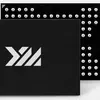The result is an advanced NAND product that competes with solutions from companies such as SK hynix and Kioxia/Western Digital. As the industry moves toward higher layer counts to keep up with data demands, YMTC’s introduction of 294 total layers indicates a drive to stay at the forefront. It is also an example of how semiconductor firms might maneuver around or adapt to external constraints, maintaining a focus on technological gains.
The bit density for YMTC’s new chip exceeds 20 gigabits per square millimeter (Gb/mm²), which puts it in the same range as certain competing products from prominent memory makers. This metric highlights the chip’s capability to store substantial data within a small space, a feature increasingly important as data-intensive tasks grow. Although some quad-level cell (QLC) offerings reach higher densities, YMTC’s triple-level cell (TLC) design offers a balance that fits various scenarios requiring both capacity and endurance.
String stacking is a fundamental element of this chip, allowing manufacturers to double or triple layer counts by merging separate stacks. This approach can introduce complexity during fabrication, but it helps the industry push forward when standard single-stack configurations hit physical or yield constraints. Dummy layers are also part of the design, providing a buffer to maintain overall production quality. For many guru’s, the depth of stacking strategies influences final product reliability. As more layers are introduced, challenges in patterning and process control become more apparent. However, YMTC’s ability to reach 294 total layers demonstrates that careful engineering can overcome these hurdles and bring viable high-density NAND solutions to the market.
The backdrop of U.S. sanctions underscores the significance of YMTC’s achievements. With restrictions on certain semiconductor equipment and technologies, many observers expected a slowdown in Chinese chip advancements. Nonetheless, YMTC’s release of a competitive 3D NAND product suggests that progress can continue, possibly through alternative supply channels or strategic domestic partnerships. This development offers a glimpse into the adaptability of chipmakers as they navigate evolving regulations and seek to maintain a steady path of innovation.
For guru’s exploring advanced storage technologies, YMTC’s 5th Generation 3D NAND presents a practical option. It combines high capacity with proven approaches to enhance performance, including an effective method for connecting memory arrays and logic layers. As cloud computing, artificial intelligence, and data analytics drive the need for larger and faster storage systems, products like YMTC’s 294-layer NAND can serve a variety of use cases. Over time, the competitive landscape may hinge on how quickly manufacturers can refine their processes to raise yields and further increase bit density. Although the market includes multiple suppliers pushing to expand their layer counts, YMTC’s latest chip indicates that it is positioned to keep pace with global developments, even under challenging circumstances.


